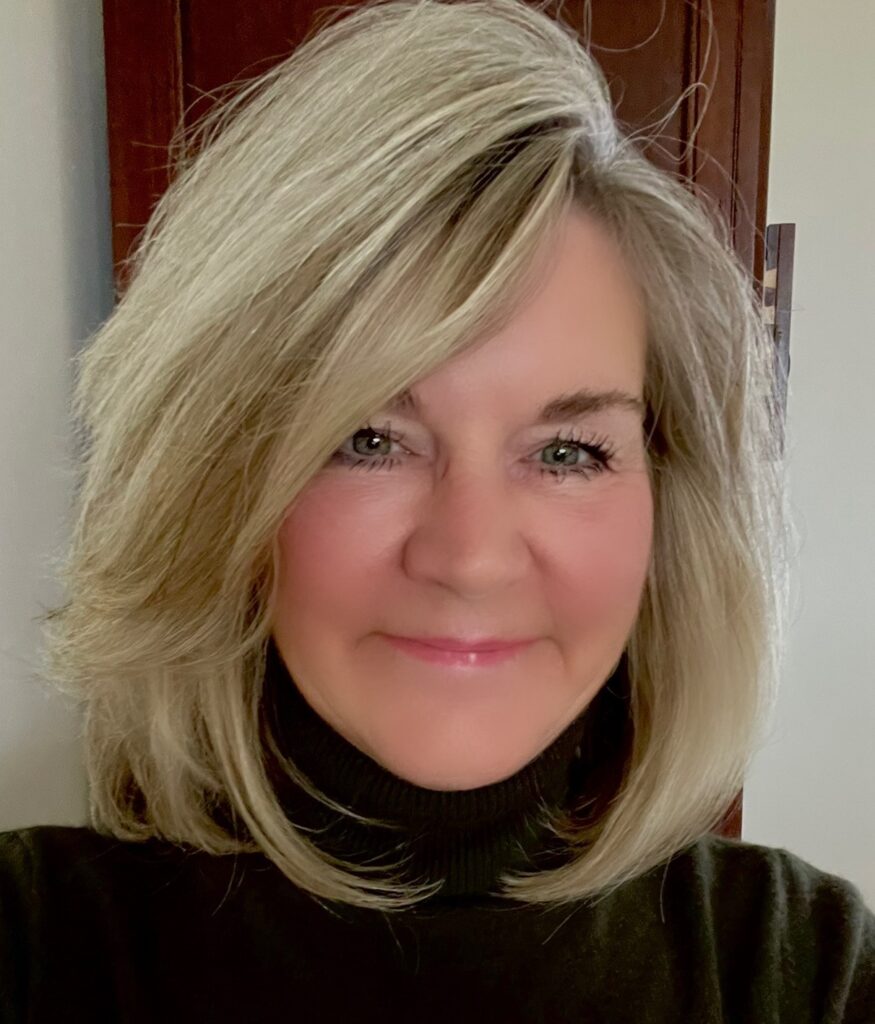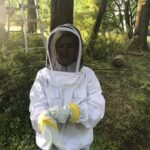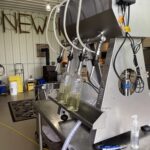C-suite conversations: Tressa Springmann, CIDO of LifeBridge
The next healthcare executive featured in our interview series is none other than Tressa Springmann, SVP & Chief Information and Digital Officer at LifeBridge Health, a large comprehensive healthcare provider in the Baltimore area.

Before joining LifeBridge Health as CIO in 2012, Springmann served as CIO of Greater Baltimore Medical Center for 14 years.
Here, Springmann shares her thoughts about huge changes coming to the healthcare industry, how to keep the IT leadership pipeline strong, and why some of her best hires have been people she took a chance on.
Key takeaways:
- For many IT positions, a candidate’s empathy and EQ are just as important as their technology credentials because there is a lot of PTSD in the healthcare ecosystem since COVID.
- The challenge of succession planning is balancing the needs of the organization with the professional goals of the IT leadership team, meaning it is a continual conversation.
- A CIO who is too busy to pursue interests outside of their work should make changes in their lives. Time away from work is essential fuel for what this role requires, and it makes you a more approachable leader.
Q&A with Tressa
Judy Kirby: How did your career as an IT professional get started?
Tressa Springmann: My undergraduate degree was in the sciences. I found myself at Johns Hopkins doing protein chemistry research and very quickly realized that I was in a career I wasn’t very excited about.
When we were automating a lot of the physical chemistry process in the lab, I raised my hand for the work and found that I really loved deploying IT. I was more excited about overseeing and bettering the process than I was about doing the scientific process.
Back then, Hopkins had a fantastic tuition reimbursement program, so I pursued a Master’s in management of technical professionals. Eventually, this led to a role at EDS in systems engineering, which was the real start of my career in IT.
JK: How do you think the CIO role is going to evolve over the next three to five years in healthcare? Do you see new responsibilities and new job qualifications?
TS: We continue to see waves of new innovation that, as an organization, we want to leverage and take advantage of for the benefit of our patients and our companies. As this occurs, we see various areas of functional focus inform the CIO choice for many organizations: the physician as a CIO, the head of marketing as the chief digital officer, etc. But at the end of the day, I think there are certain leadership competencies that have been critical and will continue to be critical for the CIO. One of them absolutely is technical competency, not as a doer but as someone with sufficient analytical and reasoning skills to support the work. It is not just a relationship role. Perhaps a new area of appropriate focus would be change management in this dynamic time we now find ourselves.
JK: One of the concerns you and I have talked about before is a lack of up-and-coming IT leadership able to fill the void as healthcare CIOs retire or move on. What are your latest thoughts on this?
TS: My biggest concerns right now are around continuing education and professional development, not just for IT leadership, but for healthcare IT professionals as a whole. HIMSS has always been a constant resource where clinicians can become more immersed in information services, or folks brand new to the industry can get some exposure. As HIMSS has sold their annual conference, it makes me wonder about the potential professional development gap for HCIT staff.
I think that we are all experiencing a workforce shortage, in a variety of ways. Most organizations, including mine, are making sure we’re firing on all cylinders for our clinicians, whether it’s retention plans, or team educational relationships, and keeping that talent pipeline moving. As our organization has had to attend to some of these clinical workforce constraints, many very creative ideas have surfaced that my leadership team is considering.
Technology companies have deeper career ladders and they have different compensation capabilities, and technologists will never be the priority workforce support area for a healthcare company where care delivery is the mission. So, it’s a big deal. On the other hand, people choosing a career in healthcare typically do so for a purpose: they can see their own contribution to the improvement of their communities. To many, this is what matters most in their professional pursuits.
At the end of the day, healthcare is a team sport. We need to have a succession plan and recognize and acknowledge the strengths and weaknesses on our current team. And it’s an ever-evolving team. The areas where we have drawn from in the past are not necessarily the areas that will seed our bench in the future, and we need to be open to that.
JK: Recruiting and retaining top talent has long been a challenge in IT, even before the pandemic. What is one of your most effective recruiting or retention strategies?
TS: Well, top talent is super subjective, right? During my career as a leader, my most intelligent, responsible, and loyal team members have been people we’ve taken a chance on. There are a lot of people who are very credentialed and have X years of Epic experience, or Infor, or Oracle, and so on. But as leaders, we’ve all been in circumstances where, despite all that book knowledge, they alienate their customer, or they’re disorganized and can’t deliver.
I always advise my team to employ situational interviewing, because we can support new team members as they get certifications and credentials. But there are basic competencies around empathy, teamwork, learning, and positive attitude that are much harder to educate on.
JK: When you are employing situational interviewing, as you recommend, how do you test for something like empathy?
TS: Empathy is probably the most underdeveloped soft skill and is something everybody’s talking about. There’s been a lot of PTSD in the healthcare ecosystem since COVID. A lot of people were called for what was essentially combat duty, where it was life and death, really high-stakes stuff. Somebody who will be in customer service situations every day in our service center needs to exhibit different competencies than, say, a senior network engineer.
Most of my situational interview questions start with, “Tell me about a time when…” and I’ll play out a scenario. Then I will ask them to talk about their choices. What did they do about it? How did they feel about it? What did they learn from it? Their answers help me understand whether they have depth of both EQ and IQ, and a desire for continual improvement. I am listening for what they think they could have done better in that situation for the other people involved. Are they self-aware?
You can’t downplay someone’s self-awareness. When I interview an individual whose answers lead me to believe he or she doesn’t have a sense of self, I proceed with caution.
JK: You mentioned succession planning before. Can you talk a little bit about the status of your succession plan and the approach you’ve taken?
TS: First, it is very important for leaders to look outside of their own ranks for their future leaders and successors. It is myopic not to do that. Secondly, it is really important to have more than one idea in mind – to always have a number of options in play. I learned this early on in my leadership journey when my identified successor took another role and moved on. I realized that there was a single point of failure in the succession plan that I’d come up with. So, I strongly recommend that, just like with any system implementation, you have a number of contingency plans.
In professional development conversations with my team, it’s very important for me to understand the things that they would like to accomplish in their careers and in the next professional development period. But it’s equally important for me to pepper in learning, industry experience, and assignments that position them potentially, should I step away, or should another leadership role open up on my team. I need to balance the organizational risk with the professional goals of my leadership team, meaning that this is a continual conversation.
JK: As CIO, are you involved in any strategic initiatives around sustainability?
TS: I am thinking a lot about organizational sustainability, given what is going on in the industry. What are we doing as an organization to make sure that we remain relevant and that we continue to be able to care for the communities we serve? We are, as we speak, knee-deep in a very provocative strategic exercise contemplating all of the external factors that have been at play, some prior to the pandemic, but many as a result of it. With the regulatory environment, with non-traditional disruptors, with the advent of the “payvider,” and data telling us that the cost of healthcare has gone up in the United States while quality has not.
Through a strategic dialogue facilitated by a partner, we’re challenging some basic assumptions that made this organization what it is today. There are probably four or five scenarios that we could see over the long run. One scenario might be that there are far fewer hospital companies, and the only thing they manage are the highest acuity and most complex care. Because this type of care is so expensive, you want to get really, really good at it and, with all of the virtual care and other technologies to keep people well, or care for them at home, this type of care should become a much smaller part of any individual’s own healthcare journey.
We are playing through some scenarios and challenging ourselves as part of the strategic process about exactly what our community needs. This community in Baltimore needs us, and they need us in a variety of different ways. So, as we combine what’s happening externally with what we believe the community we serve will need in the future, that allows us to be better positioned for the decisions we’re going to have to make around sustainability. We’re engaged in this work because we do believe that the future is going to be very different.
JK: What other possible scenarios may there be for the future of the healthcare industry?
TS: Is there a more effective role we can play serving our community in the wellness space? We aren’t reimbursed that way today, are we? Most things that make our lives more valuable and more comfortable every day don’t happen in a physician’s office. For example, if someone has a sleep disorder, there are all these different devices and treatments available which are hard to sort through. Do they have anything better than just Google to help understand which one is efficacious?
JK: Looking back on your own journey, what career advice do you have for young professionals interested to become leaders?
TS: I’d love to say something incredibly inspirational, but I believe that if you find something you really enjoy and become good at it, everything else will fall into place.
I did some informational interviews with college students recently, and they want to be the President or CEO of a corporation, they want to be the CIO, they want to launch their own startups, etc. While I think it is important to start with the end in mind, the advice I often give these young people is to look closely at the elements of what they want their workday to be like, what they want their story to be, and what they want their impact to be, as they evaluative measures of success, as opposed to a job title.
My other advice is to stay open-minded and raise your hand for opportunities to try new things. Having a variety of different professional experiences, large and small, will help a rising professional understand what he or she is most passionate about as a person. The sooner they figure that out, the sooner they can get on a career path that allows them to do their most inspiring and rewarding work.
JK: Outside of work and spending time with friends and family, what do you love to do with your free time?
TS: Some would say that CIOs never have time outside the office, but we do. If someone doesn’t, I challenge them to go and figure that out, because taking time away from work is essential to fuel what this role requires, and certainly makes them a more approachable leader.
Around 10 years ago I really started getting into wine. So, I went through a program at Penn State on wine production that included wine chemistry – not the sommelier stuff, like how to taste, or how to understand the aromatics, although the program did include some of that, but literally the chemistry and nuance that contributes to the production of a quality wine.

I am also a second-year beekeeper. I got turned on to all the antibacterial and antiviral properties of honey and pollen, and I just wanted to understand how it worked. Professionally, I’ve been an ideas-to-outcome architect, and I think as a person, when I fundamentally get intrigued by something I just want to know how it ticks. By the way, I’ve killed a lot of bees, and some of my wine has been really horrible.
JK: You make your own wine?
TS: I do periodically, but more often I rely on others in the business who have access to quality varietals from elsewhere (Maryland is NOT known for its high-quality grapes) and all of the appropriate equipment.

In fact, at the end of October a group of us began the year-long process of making what we hope will turn out to be a lovely red wine from grapes harvested in the Lodi AVA (American Viticultural Area) in California. It sounds quite a bit like our role as technology leaders – we get involved with something based on our own interests and abilities, and then surround ourselves with others who have better access, talent, products, and ideas.
JK: I can’t wait to hear how that turns out!
TS: I will let you know, and of course, if it is any good, I’d love to share some with you.